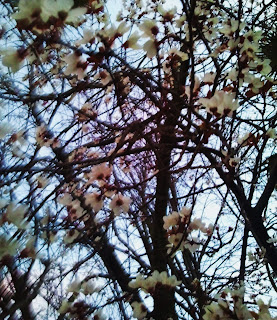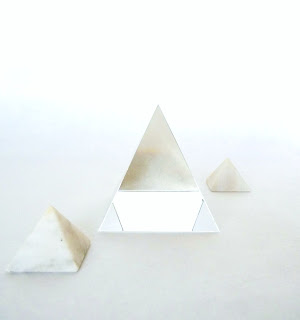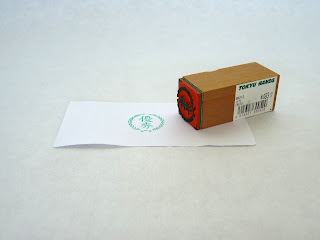I recently borrowed a book from the library about G. I. Gurdjieff, a Russian esoteric thinker of the early 20th Century. I chose a book about him (in this case by the novelist John Shirley) rather than by him because I thought it would give me a broader overview of his life and ideas - and be written in a more modern, direct style.
Shirley's book often references In Search of the Miraculous, written by one of Gurdjieff's students, P. D. Ouspensky (published in 1949). This title is commonly accepted as the seminal book about Gurdjieff.
I had heard this title before. When I moved to New York after college I worked in a non-profit art gallery called Exit Art. One of the exhibitions staged during my time there explored the history of performance art, highlighting pieces that required an extraordinary level of endurance by the artist, whether mental or physical. The exhibition included a piece by conceptual artist Bas Jan Ader that particularly caught my eye. The piece was represented by a melancholy, grainy, black and white photograph of a sailboat at sea. The cursive script along the bottom of the picture read In Search of the Miraculous.
I assume that Bas Jan Ader borrowed the title from Ouspensky. Otherwise it's quite a coincidence.
 |
| In Search of the Miraculous by Bas Jan Ader, 1975. Photo from MOCA archives |
Bas Jan Ader's piece was a multi-faceted project spanning two years. It began as performances which took the form of nighttime walks through Los Angeles in 1973. The artist documented these walks with black and white photographs. An air of hopelessness and sadness permeates much of Ader's work. In Search of the Miraculous concluded in 1975 with a piece that had the artist cross the Atlantic by himself in a thirteen foot boat. The voyage started in Cape Cod, MA and would have ended in Falmouth, England had Ader not perished at sea. In Search of the Miraculous drips with tragic irony as the quixotic voyage was almost certainly bound to fail.
I like the word miraculous but don't think it's anything I'd care to search for. Miraculous implies extraordinary. I think I'd rather search for the ordinary.
Gurdjieff claimed that most people sleepwalk through life. Like robots, humans mechanically react to events, never really knowing themselves, never truly feeling anything. The Waking Up from the sleepwalk, to me, resembles the Buddhist notion of enlightenment. To truly see things and yourself as they are with no delusions. Nothing changes, everything is ordinary except for your perception - which is perfectly clear. Like putting on glasses after living a lifetime with severe myopia.
I've read of and heard personal accounts of brief glimpses into clarity. Some came during a near death experience, some came with DMT trips, some came in meditation practice. These moments are sometimes described as "Of course! Of course! It's so obvious and right under my nose. How could I have not seen it this way?" The clarity is momentary however and then impossible to describe afterward. Like painting a picture of a red apple when the color red, in fact, does not exist.



















